The two fungi that you see above look rather conventional, but they differ.The red spotty one is from the genus Amanita. All are characterized by a spotty top and white gills underneath. They are poisonous to varying degrees. One,Caesar's mushroom that grows in Alpine forests, is prized as a delicacy, but others range from the one whose poison breaks down when cooking, through to Death Cap. You need to avoid eating any one of this genus of fungi. Look, enjoy the view, but don't eat-ever. Strangely the name Fly Agaric is a misnomer, as it is not a member of the genus Agaricus, but of the genus Amanita
Yet you also see a bolete. Boleti are very different from Amanitas,and generally have a short, stubby stem [stipe.] Underneath they are significantly different from other fungi, for they often though not always have a sponge-like appearance rather than gills. Most boleti are edible, but not all are palatable. The cep [penny bun] is a delicacy, but others include peppery bolete [too fierce] and Satan bolete, whose name suggests that it is somewhat antisocial, as it is mildly poisonous. But all poisonous boletes have red somewhere on the stipe. However, boletes are not always worth picking. Once at Alderley Edge I spotted a very large specimen and investigated, only to find that the maggots had reached it first and it was not worth picking.
Another fungus type unpopular with foresters and arborists is Honey Fungus. This fungus was a few years ago subject to a report from North America, I am unsure whether it was the United States or Canada, where an arborist had discovered a patch of honey fungus so large that it was deemed the largest living creature on the planet. Yet foresters dread its presence, as its dark, bootlace-like hyphae ingest the wood of living trees and render them useless for forestry purposes.It is edible, but beware, for some people suffer an allergic reaction to it. I have never heard of a fatal reaction, but I avoid eating it, sweet though it is said to be.
The wood mushroom,Agaricus silvicola, looks like the mushroom you buy from the shops, as it is a member of the Agaric genus, but it will give you stomach ache. One sign that you have picked a poisonous agaric is that its flesh goes yellow when picked.


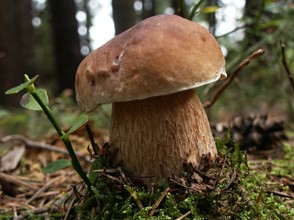
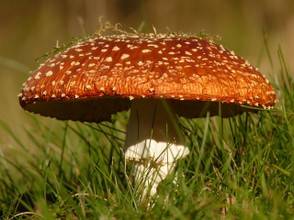
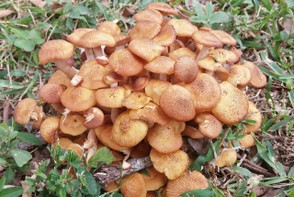
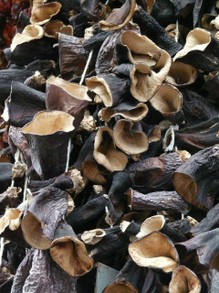
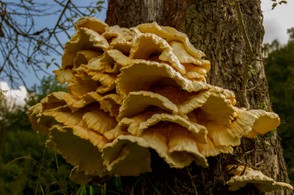



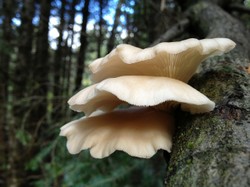

 Women of the Gospelson 10/11/2025
Women of the Gospelson 10/11/2025
 Religious Gardenson 08/25/2025
Religious Gardenson 08/25/2025
 Doctor of the Church: John Henry Newmanon 08/03/2025
Doctor of the Church: John Henry Newmanon 08/03/2025
 Restoring the Palm Houseon 07/16/2025
Restoring the Palm Houseon 07/16/2025


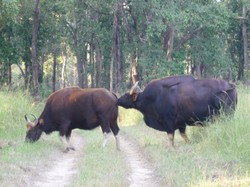
Comments
It was not reported on national news,and I had not heard of it. But it matters, so many thanks for passing on this information.
Last week this, western (Atlantic) pond side covered the first-ever infection of a person by a fungus and the follow-up finding to plants hearing to plants releasing sounds!
The person, according to National Post Staff in their article Mycologist becomes first person in the world to contract a plant fungal disease March 31, 2023, is a 61-year-old from India.
The fungus Chondrostereum purpureum usually just sees to it that Rose family members have silver leaf disease ;-{.
Was that among the news on your eastern-pond side?
Mushrooms contain moisture,so might be damaged by freezing.Oyster are quite soft,so I would not think that it freezes well. But mushrooms can be kept in a normal refrigerator.
I'd meant to ask a related question along with my giant puffball- and oyster mushroom-related comments below.
Would you or your sister or your wife happen to know if mushrooms freeze well? (I worry that I may need to collect and freeze black trumpet, chicken-of-the-wood, old-man-of-the-wood and yellowfoot after I try giant puffball this weekend. One type per week would mean five more weeks all tolled ;-{)
Thank you!
Giant puffball is next -- this weekend, when it'll be lightly fried -- on my culinary results from applying west-pond field mushrooms here to your sister's scrumptious east-pond, Irish Beacan Bruithe recipe.
I like the way the oyster mushrooms turned out this past weekend. My feline sentients liked the oyster-mushroomed Beacan Bruithe too. They serve as scent-testers and sometimes as taste-testers (for example, they like salads, but not for some reason the carrots, which they politely flick to the side of the bowl).
Derdriu, I have read that giant puffball is best lightly fried.
Thank you!
This weekend I expect to make Veronica's recipe for Beacan Bruithe.
I intend to apply your observations by making it with oyster mushrooms. If I like Beacan Bruithe -- why wouldn't I considering the cultural source and your sister as top-notch recipe-shareress -- I probably will try black trumpet, chicken-of-the-wood, giant puffball, old-man-of-the-wood and yellowfoot one by one and then perhaps them all together.
If only we knew what makes truffles so sensitive to the right conditions!
I am familiar with all except black trumpet, yellowfoot, and old man of the woods, which do not seem common over here. I cannot comment on what they taste like in a medley, but I think that oyster mushroom goes well in many dishes.
Also, I'd meant to ask another somewhat related question, which deals with such edible mushrooms as chicken-of-the-woods and oyster that occur on your side of the (Atlantic) pond.
This weekend looks like a go for making the Beacan Bruithe recipe that Veronica has in her Balnamoon Skink wizzley. The recipe mentions field mushrooms.
Black trumpet (Craterellus caeruleofuscus) and yellowfoot (Craterellus tubaeformis) chanterelle, chicken-of-the-wood (Laetiporus sulphureus), giant puffball (Calvatia gigantea), old-man-of-the-wood (Strobilomyces strobilaceus) and oyster (Pleurotus ostreatus) mushrooms number among the edibles growing around the box elder and eastern white pine trees and in the meadow.
Would you be familiar with how less or more pleasing it is to eat the above-mentioned mushrooms? If so, would it taste better to select one kind or to mix them all together?